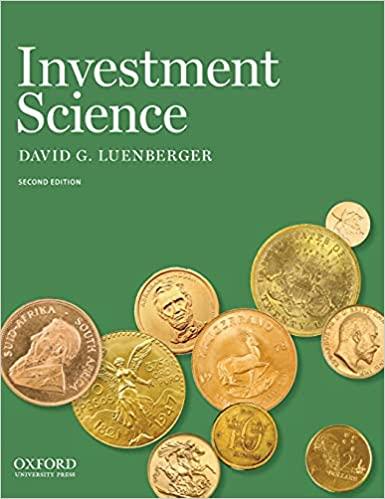Consider two binomial assets, each with price equal to 1. The first is a stock that at
Question:
Consider two binomial assets, each with price equal to 1.
The first is a stock that at the end of a period pays either 3 or 0 with probabilities \(p\) and \(1-p\), respectively. The second asset is risk-free and pays \(R\) at the end of the period.
(a) A portfolio is defined by investing a portion \(\alpha\) of one's wealth in the stock and a portion \(1-\alpha\) in the risk-free asset. Find the log-optimal value of \(\alpha\).
(b) What is the risk-neutral probability for this situation?
(c) What is the value of \(\alpha\) if \(p=q\) ?
Fantastic news! We've Found the answer you've been seeking!
Step by Step Answer:
Related Book For 

Question Posted:





